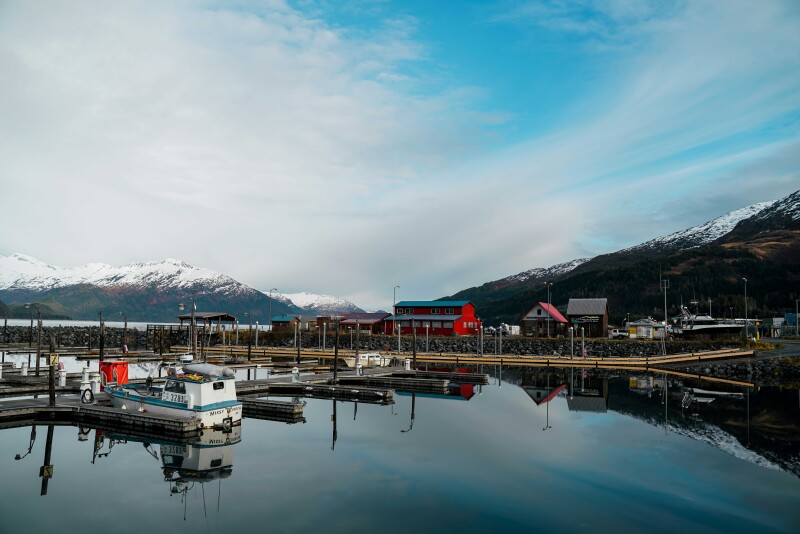The Alaska fishing industry, long regarded as an economic engine and cultural cornerstone, is grappling with steep financial losses and structural challenges. A recent Alaska Seafood Snapshot economic report by NOAA Fisheries underscores the scale of the crisis, showing that the state’s seafood sector has been hit with nearly 7,000 lost jobs, shrinking profitability, and a $1.8 billion decline in revenues between 2022 and 2023.
The report is based on ex-vessel landings, processed products, and wholesale revenue data through 2022, alongside statistical projections for 2023. Analysts also spoke with fishermen, processors, and community members to better capture the social impacts of the downturn. While this report focuses on the commercial fishing sector, NOAA noted that future studies may explore the broader effects on recreational and subsistence fisheries.
As Robert Foy, director of the Alaska Fisheries Science Center stated in a press release, “The social and economic ramifications of Alaska’s losses have reverberated down the West Coast and across the country.”
Rising Costs and Squeezed Margins
According to NOAA’s report, the industry’s profitability shrank by 50 percent from 2021 to 2023, with wholesale seafood values falling by $1.2 billion. Ex-vessel revenues, a key indicator of what fishermen earn for their catch dropped 32% in just one year, from 2022 to 2023. Increases in wages, energy prices, and interest rates compounded these financial losses, leaving fishermen and processors struggling to stay afloat.
Post-COVID market strategies only added pressure. In 2022 and 2023, retailers kept seafood prices artificially high by gradually moving older inventory out of cold storage. This change reduced the demand for new products from fishermen and processors, further driving down the prices paid to producers.
At the same time, competition from Russian seafood exports has created confusion in global markets. Russian walleye pollock, which is sometimes labeled as “Alaska pollock” in international markets, erodes consumer trust and blurs the distinction between sustainably harvested Alaskan products and those from fisheries with different regulatory standards.
Plant Closures Hit Hard
The financial strain has forced multiple processing plants to close, leaving communities hurting. In 2024, Trident Seafoods announced it was selling four of its largest plants, including facilities in Kodiak, False Pass, and Ketchikan. While Trident has promised no immediate job cuts, the uncertainty surrounding the transition cast a shadow over these fishing communities.
Other companies, such as Peter Pan Seafoods, took even more drastic steps. Peter Pan’s indefinite closure of its King Cove operation has devastated the small town’s economy, slashing 70% of its revenue and disrupting critical services like hydroelectric power and waste disposal. OBI Seafoods also shuttered its plant in Larsen Bay, further limiting processing capacity in the region.
On St. Paul Island in the Bering Sea, the closure of the town’s only processing plant after the snow crab fishery was shut down has had dire consequences. NOAA’s report highlights that the loss of the plant reduced the town’s municipal tax revenue by 60%, forcing the community to declare a “cultural, economic, and social emergency.”
A Cultural and Economic Crisis
The challenges facing Alaska’s fishing communities go beyond economics. For many coastal towns, fisheries are not just a source of income, they’re a way of life, a connection to tradition, and a key part of community identity.
“Alaska Natives have fished for thousands of years,” the NOAA report explains, “developing cultural systems deeply interconnected with fisheries for social cohesion, identity, cross-generational learning, and a strong subsistence economy.” The report warns that the decline of commercial fisheries threatens more than just paychecks; it endangers the cultural fabric and social well-being of these communities.
The economic downturn may also lead to a decline in fisheries participation, population loss, and reduced social services. Communities that rely heavily on fishing are seeing impacts on mental and physical health, equity, and education—further compounding the challenges they face.
The reopening of the red king and snow crab fisheries in 2024 offers some hope, but rebuilding the infrastructure lost to plant closures will take time. For towns like St. Paul and King Cove, the damage runs deeper than lost jobs. It’s about preserving the identity and resilience of fishing communities.
NOAA’s report makes it clear that the future of Alaska’s fishing industry will depend on more than favorable seasons. Addressing systemic issues like global competition, rising costs, and climate-driven changes will require collaboration across the sector. The path forward will demand not only innovation but also a renewed commitment to supporting the people and communities that anchor this essential industry.







